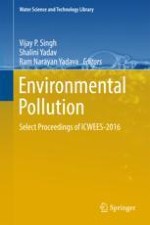2018 | OriginalPaper | Chapter
Research Need on Environmental Gains in Conservation-Induced Relocation
Authors : Surendra Singh Rajpoot, M. S. Chauhan
Published in: Environmental Pollution
Publisher: Springer Singapore
Activate our intelligent search to find suitable subject content or patents.
Select sections of text to find matching patents with Artificial Intelligence. powered by
Select sections of text to find additional relevant content using AI-assisted search. powered by
